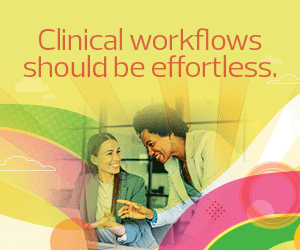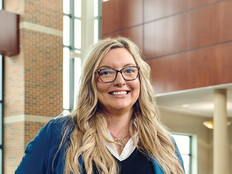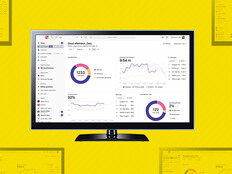2. Automatic Updates Provide Better Device Security for Clinicians
Another aspect of remote management is the ability to automatically update devices to keep them running smoothly. Dr. Jason Hill, the associate chief medical information officer at Ochsner Health, says his clinical applications team pushes updates to thousands of mobile and desktop devices on a quarterly schedule.
Hill says the vast majority of Ochsner’s devices, which are issued by the medical center with ID numbers, can be updated using a remote link, increasing efficiency.
“Some doctors bring their own devices, in which case you can’t update via the remote link,” Hill explains. He says IT support can help clinicians set up updates on their personal devices, but there is a greater risk of malfunction if the device is not configured correctly.
In addition, Hills says regular maintenance is crucial because “if we’re not updating devices, then we’re creating huge security loopholes. We have an obligation to create a secure portal so that people feel comfortable putting their health information in there.”
3. Managing Alerts to Reduce Distractions for Clinicians
Mobile alerts can either be a big help or a major distraction, depending on how they are used. Burstain says clinicians at UW Medicine use Epic’s Haiku application to optimize communication, which keeps operations running efficiently.
“Providers can receive alerts as soon as a patient’s test results are back. They also keep their schedules on there, so physicians will see in real time if a procedure has been delayed.”
The ability to temporarily block alerts is also part of the workspace management strategy. Within the communication platform, for example, upon entering the operating room, a surgeon’s status automatically switches to “unavailable.”
Burstain adds that the ability to silence nonurgent alerts is just as important to reduce distractions. An upgrade later this year will enable UW Medicine’s system to identify when an emoji is used in a message, he says.
“The system will know not to ping the doctor,” Burstain explains. “The doctor will still receive the message, but won’t get annoyed by the phone constantly going off.”
READ MORE: Digital workspace services can enhance clinical experiences.
4. Use Single Sign-On to Improve Workflow Efficiencies for Nurses
Research found that implementing single sign-on reduced the amount of time clinicians spend logging in to devices from 144.2 seconds to 110 seconds. Estimating that each clinician logs in to a device 10 to 15 times a day, on average, and that a clinic has 16 clinicians, the result is an average annual time savings of 761.6 hours for a single clinic, at an estimated annual cost savings of $16,755.
Before Ochsner switched to single sign-on, Hill recalls a nurse telling him that she had to re-enter her username and password information more than 100 times each day.
“That’s insanity,” Hill says. “Also, if you don’t have single sign-on, your app ecosystem just sort of crumbles because then you’re updating all these different apps or web gateways, and that’s a problem. That’s why we're working on developing a more unified web gateway for our mobile devices with QR codes.”
Ultimately, solutions like these serve to improve the experience for both providers and their patients. “With reliable technology that gives them access to information in real time,” Jennings says, “clinicians can make better medical decisions and build trust and rapport where it matters — directly with their patients.”












